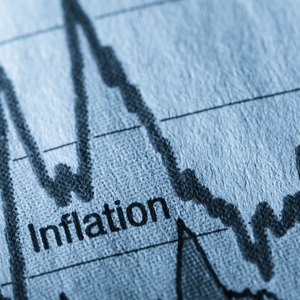
Any time you go to the store, the prices you face could differ from those you paid yesterday, last week or last year, because the cost of goods and services tends to increase over time. The consumer price index, or CPI, is a measure of inflation based on the price changes of hundreds of consumer goods in various categories, such as food, clothing, health care, energy and education. Although CPI is the most widely used measure of inflation, it suffers from some significant limitations.
Tips
A major drawback of using CPI to measure inflation is that it fails to account for product quality, new products, product substitutions and individual buying habits. Therefore, the CPI may underestimate or overestimate inflation.
Product Quality
The CPI fails to account for changes in product quality, which can increase the value of goods and the standard of living of consumers. For example, if the cost of buying a computer stays the same from one year to the next, it might not have any impact on the CPI, even if new computers are more powerful and more energy efficient. Likewise, if the price of vehicles increases, but new cars are safer, last longer and have more features than old models, the CPI may overestimate inflation because those extra features have value that is not taken into account.
New Products
New products constantly enter the market, but they don't become part of the basket of goods used to calculate the CPI until they become common consumer goods. As a result, CPI may fail to account for the price chances of new products when estimating inflation. The prices of new technologies often decline sharply as they develop, so if those declines aren't included in the CPI, the index can end up overestimating inflation.
Product Substitutes
The CPI gives different weight or importance to different types of products. When the price of a certain product increases, consumers may start to buy less of it in favor of some cheaper substitute. For instance, if poor weather caused a shortage of peanuts, the price of peanut butter might skyrocket and prompt consumers to buy substitutes like almond butter, hummus or Nutella. CPI can't accurately account for such shifts in preferences.
Personal Buying Habits
The CPI represents a baseline measure of the overall inflation rate, but it may not do a good job of measuring the inflation rate faced by any particular individual. The actual mix of goods and services a person buys may differ from the CPI. For example, someone at the low end of the income scale might spend a large portion of his income on food, so any increases in food prices could cause his personal inflation rate to rise much faster than the CPI.
References
- U.S. Bureau of Labor Statistics: Consumer Price Index – Frequently Asked Questions (FAQs)
- U.S. Economy at a Glance | U.S. Bureau of Economic Analysis (BEA)
- {'url': 'http://web.mnstate.edu/stutes/Notes/Mankiw/cpi/outlinee.htm', '_id': 'http://web.mnstate.edu/stutes/Notes/Mankiw/cpi/outlinee.htm', 'external_url': 'http://web.mnstate.edu/stutes/Notes/Mankiw/cpi/outlinee.htm'}
- Utah Department of Workforce Services: Consumer Price Index
- Congressional Research Service. "Introduction to U.S. Economy: Inflation," Page 1. Accessed Sept. 17, 2020.
- BLS. "CPI Inflation Calculator." Accessed Sept. 17, 2020.
- BLS. "Consumer Price Index – July 2020," Page 4. Accessed Sept. 17, 2020.
- BLS. "Consumer Price Index – July 2019," Page 4. Accessed Sept. 17, 2020.
- FDIC. "An Update on Emerging Issues in Banking," Page 1. Accessed Sept. 17, 2020.
Writer Bio
Gregory Hamel has been a writer since September 2008 and has also authored three novels. He has a Bachelor of Arts in economics from St. Olaf College. Hamel maintains a blog focused on massive open online courses and computer programming.

